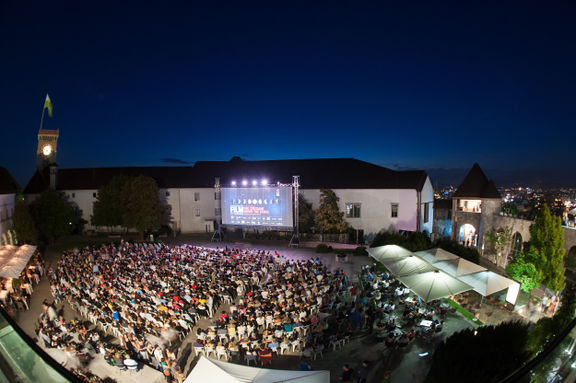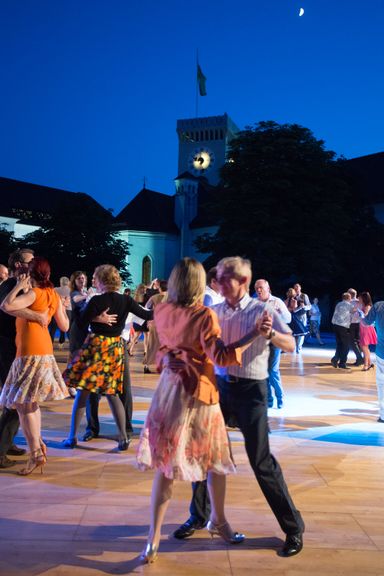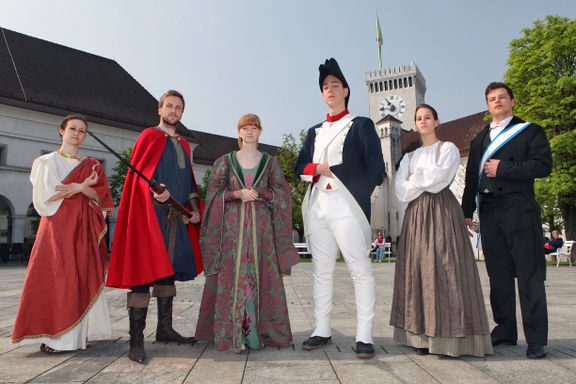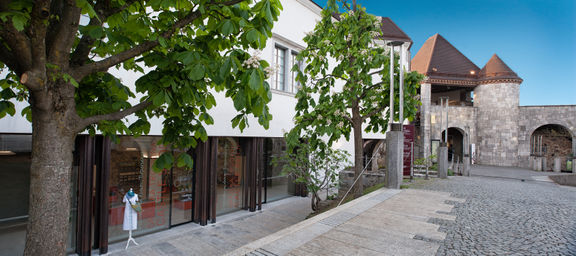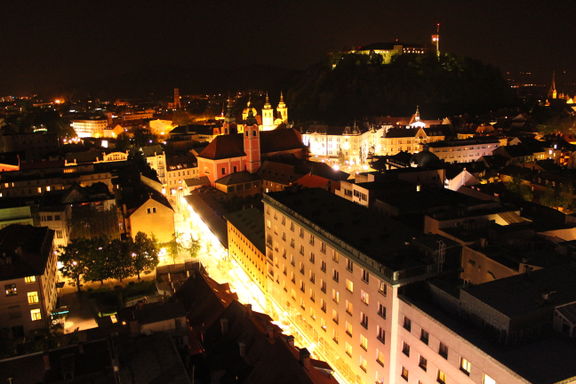Difference between revisions of "Ljubljana Castle"
Janez Premk (talk | contribs) |
Anže Zorman (talk | contribs) (sloteasers tinkering) |
||
| (44 intermediate revisions by 8 users not shown) | |||
| Line 1: | Line 1: | ||
{{Article | {{Article | ||
| − | | status = | + | | status = |
| maintainer = Janez Premk | | maintainer = Janez Premk | ||
}} | }} | ||
| Line 6: | Line 6: | ||
| name = Ljubljana Castle | | name = Ljubljana Castle | ||
| localname = Ljubljanski grad | | localname = Ljubljanski grad | ||
| + | | logo = Ljubljana Castle (logo).svg | ||
| street = Grajska planota 1 | | street = Grajska planota 1 | ||
| town = SI-1000 Ljubljana | | town = SI-1000 Ljubljana | ||
| − | | | + | | map = http://www.openstreetmap.org/?lon=14.50846&lat=46.04891&zoom=15&layer=mapnik |
| telephone = 386 (0) 1 306 1276 | | telephone = 386 (0) 1 306 1276 | ||
| fax = 386 (0) 1 306 1208 | | fax = 386 (0) 1 306 1208 | ||
| − | | email = info@ | + | | email = info-center@ljubljanskigrad.si |
| − | | website = http://www. | + | | website = http://www.ljubljanskigrad.si/ |
| − | + | | managed by = Ljubljanski grad Public Institute | |
| − | | managed by | ||
| opening hours = | | opening hours = | ||
| frequency = | | frequency = | ||
| Line 20: | Line 20: | ||
| contacts = {{Contact | | contacts = {{Contact | ||
| name = | | name = | ||
| − | | role = | + | | role = |
| street = | | street = | ||
| town = | | town = | ||
| Line 28: | Line 28: | ||
| fax = | | fax = | ||
}} | }} | ||
| + | |accounts= | ||
| + | http://twitter.com/Ljubljanskigrad | ||
| + | http://www.facebook.com/LjubljanaCastle | ||
| + | https://www.youtube.com/user/LjubljanskiGrad | ||
| + | https://www.instagram.com/ljubljanacastle/ | ||
}} | }} | ||
{{Teaser| | {{Teaser| | ||
| − | [[Ljubljana Castle]] is situated on a small hill in the centre of Ljubljana. | + | {{Wide image|Ljubljana Castle 2012 01.jpg}} |
| + | |||
| + | |||
| + | The [[Ljubljana Castle]] is situated on a small hill in the centre of Ljubljana. Rebuilt several times, some parts of today's structure originated in the 15th century. The castle complex has been renovated over a 40-year period by various architects; one can even trace [[Jože Plečnik|Jože Plečnik's]] various ideas at the Castle Hill. Ljubljana Castle serves as a venue for a number of cultural events, including weddings and exhibitions. Over 400 events attract up to a million visitors per year. | ||
| + | |||
| + | Since 2011, the venue programme has been managed by the [[Ljubljanski grad Public Institute]]. In May 2015, a newly established [[Museum of Puppetry]] opened at the Ljubljana Castle. | ||
}} | }} | ||
| + | {{TeaserSlo|Ljubljanski grad je prizorišče za številne kulturne prireditve.}} | ||
== History == | == History == | ||
| − | The oldest castle on the hill probably dates back to the 11th century. Written sources mention it in 1144 as the seat of the feudal estate of the Carinthian Dukes of Spanheim. In the first half of the 13th century they conferred town privileges on the settlement on the Ljubljanica River. In approximately the same period a stone-built fortress was erected on the Castle Hill to better protect the town; together with the two extensions of the town walls, it closed the fortification ring of | + | The oldest castle on the hill probably dates back to the 11th century. Written sources mention it in [[established::1144]] as the seat of the feudal estate of the Carinthian Dukes of Spanheim. In the first half of the 13th century they conferred town privileges on the settlement on the Ljubljanica River. In approximately the same period, a stone-built fortress was erected on the Castle Hill to better protect the town; together with the two extensions of the town walls, it closed the fortification ring of Mestni trg (Town Square). In 1335, the castle, as the seat of Carniola was transferred to the Habsburgs, thereafter remaining their hereditary property for several centuries. |
| − | + | The present castle, historically the third one, was built by the Duke, later Emperor, Frederick III. It was erected in the 15th century after its predecessor had been completely destroyed. With the exception of the outer walls, the castle chapel, the corner towers and two entrance towers, the rest of the buildings originated in the 16th and 17th centuries. | |
| − | + | As late as 1848, the appearance of the castle was enhanced by the dominant watchtower replacing the wooden one, which gave the present architectural ensemble its final form and the castle its characteristic silhouette, corrected in 1990s. | |
| − | + | During its long and varied history, the castle was mostly a military fortress, but also functioned as the seat of provincial rulers, with the city tower being used by pipers and fire guards. In spite of all this, the role of the castle gradually dwindled, as did the strategic importance of the fortress and walls. In 1814, it was rescued from total destruction by a governmental decree to turn it into a penal institution. In 1905, the castle was bought by the City of Ljubljana and turned into multi-residential building for the citizens, but mainly for prisoners and the poor. | |
| − | |||
| − | During its long and varied history the castle was mostly a military fortress, but also functioned as the seat of provincial rulers, with the city tower being used by pipers and fire guards. In spite of all this the role of the castle gradually dwindled, as did the strategic importance of the fortress and walls. | ||
== Renovation == | == Renovation == | ||
| − | Since 1988 [[Ljubljana | + | Since 1988, the [[Municipality of Ljubljana]] has been carrying out continuous archaeological research at Ljubljana Castle, which confirmed the continuous settlement of the hilltop. |
| − | In 1930s Jože | + | In the 1930s, [[Jože Plečnik|Jože Plečnik's]] idea was to build a new conical parliament to replace the castle, but he managed to realise only Šance (the redesigned remains of the fortifications) and the avenue. The first renovation work was carried out in the 1940s according to town planner [[Boris Kobe]]. Among recent renovation works, that carried out in 1964–2004 by architects [[Miha Kerin]], [[Majda Kregar]] and [[Edo Ravnikar]] gave the castle a new steeper roof, a higher watchtower, new access and a regulated defensive corridor around the margin of the former fortified walls, linking the renovated castle structures together. |
| − | + | {{image|Ljubljana Castle 2003 Palatium.jpg}} | |
| − | + | At the end of 2006, the [[Municipality of Ljubljana]] connected the Ljubljana Castle with the historic city centre by an urban means of transport: a funicular railway. The ride up the slope of the Castle Hill has since then been included in a regular guided walking tour of the city organised by the Ljubljana Tourist Board. The lower station of the funicular railway is located at Krekov trg (Krek Square), next to the [[Ljubljana Puppet Theatre]], just across from the city's open-air marketplace. | |
| − | The | ||
| − | + | == Premises and permanent exhibitions== | |
| − | + | The castle offers a tourist viewing tower, a virtual museum, a chapel and several cultural venues: Hribar's Hall, Palatium, Pentagonal Tower, Rocks Hall, Estate Hall, White and Blue Halls, Erasmus Tower, Archers' Tower and Pipers' Tower. Cultural events, such as [[Gustav Film|Gustav Film's]] ''Comedy under the Stars'' and film screenings, such as [[Kinodvor Cinema|Kinodvor Cinema's]] popular ''Film under the Stars'' during the summertime, also take place in the castle courtyard. In addition to performing arts and film events, temporary exhibitions, as well as some permanent exhibitions featuring the history of the city, are also displayed at Ljubljana Castle. | |
| − | |||
| − | |||
| − | |||
| + | The [[Museum of Puppetry]], a joint project of the [[Ljubljana Puppet Theatre]] and [[Ljubljanski grad Public Institute]], has also been set up at the castle premises, now giving visitors young and old a new reason to venture up to the Ljubljana Castle. | ||
== See also == | == See also == | ||
| − | * [[ | + | * [[Ljubljanski grad Public Institute]] |
| − | * [[ | + | * [[Ljubljana Festival]] |
| − | + | * [[Museum of Puppetry]] | |
| − | * [[ | + | * [[Kinodvor Cinema]] |
| − | * [[ | ||
== External links == | == External links == | ||
| − | |||
* [http://en.wikipedia.org/wiki/Ljubljana_Castle Ljubljana Castle on Wikipedia] | * [http://en.wikipedia.org/wiki/Ljubljana_Castle Ljubljana Castle on Wikipedia] | ||
| − | * [http://www.burger.si/Ljubljana/Gradovi_LjubljanskiGrad.htm Virtual | + | * [http://www.burger.si/Ljubljana/Gradovi_LjubljanskiGrad.htm Ljubljana Castle] on the [[Virtual Guide to Slovene Museums and Galleries]] |
* [http://www.arhitekturni-vodnik.org/?result=86%2C2 Ljubljana Castle on Architectural Guide] | * [http://www.arhitekturni-vodnik.org/?result=86%2C2 Ljubljana Castle on Architectural Guide] | ||
| − | + | * [http://sl.wikipedia.org/wiki/Ljubljanska_vzpenjača Ljubljana Funicular Railway on Wikipedija] (in Slovenian) | |
| − | * [http://sl.wikipedia.org/wiki/Ljubljanska_vzpenjača Ljubljana Funicular Railway on | ||
| + | {{Gallery}} | ||
[[Category:Monuments and sites]] | [[Category:Monuments and sites]] | ||
| + | [[Category:Venues]] | ||
[[Category:Theatre venues]] | [[Category:Theatre venues]] | ||
| + | [[Category:Music venues]] | ||
[[Category:Visual arts galleries]] | [[Category:Visual arts galleries]] | ||
| + | [[Category:Castles]] | ||
| + | [[Category:Galleries]] | ||
| + | [[Category:Film venues]] | ||
| + | [[Category:Outdoor venues]] | ||
| + | |||
| + | [[Category:Updated 2020]] | ||
Latest revision as of 17:27, 19 March 2021
History
The oldest castle on the hill probably dates back to the 11th century. Written sources mention it in 1144 as the seat of the feudal estate of the Carinthian Dukes of Spanheim. In the first half of the 13th century they conferred town privileges on the settlement on the Ljubljanica River. In approximately the same period, a stone-built fortress was erected on the Castle Hill to better protect the town; together with the two extensions of the town walls, it closed the fortification ring of Mestni trg (Town Square). In 1335, the castle, as the seat of Carniola was transferred to the Habsburgs, thereafter remaining their hereditary property for several centuries.
The present castle, historically the third one, was built by the Duke, later Emperor, Frederick III. It was erected in the 15th century after its predecessor had been completely destroyed. With the exception of the outer walls, the castle chapel, the corner towers and two entrance towers, the rest of the buildings originated in the 16th and 17th centuries.
As late as 1848, the appearance of the castle was enhanced by the dominant watchtower replacing the wooden one, which gave the present architectural ensemble its final form and the castle its characteristic silhouette, corrected in 1990s.
During its long and varied history, the castle was mostly a military fortress, but also functioned as the seat of provincial rulers, with the city tower being used by pipers and fire guards. In spite of all this, the role of the castle gradually dwindled, as did the strategic importance of the fortress and walls. In 1814, it was rescued from total destruction by a governmental decree to turn it into a penal institution. In 1905, the castle was bought by the City of Ljubljana and turned into multi-residential building for the citizens, but mainly for prisoners and the poor.
Renovation
Since 1988, the Municipality of Ljubljana has been carrying out continuous archaeological research at Ljubljana Castle, which confirmed the continuous settlement of the hilltop.
In the 1930s, Jože Plečnik's idea was to build a new conical parliament to replace the castle, but he managed to realise only Šance (the redesigned remains of the fortifications) and the avenue. The first renovation work was carried out in the 1940s according to town planner Boris Kobe. Among recent renovation works, that carried out in 1964–2004 by architects Miha Kerin, Majda Kregar and Edo Ravnikar gave the castle a new steeper roof, a higher watchtower, new access and a regulated defensive corridor around the margin of the former fortified walls, linking the renovated castle structures together.
 The renovated premises at the Ljubljana castle, the Palatium hall, 2003
The renovated premises at the Ljubljana castle, the Palatium hall, 2003
At the end of 2006, the Municipality of Ljubljana connected the Ljubljana Castle with the historic city centre by an urban means of transport: a funicular railway. The ride up the slope of the Castle Hill has since then been included in a regular guided walking tour of the city organised by the Ljubljana Tourist Board. The lower station of the funicular railway is located at Krekov trg (Krek Square), next to the Ljubljana Puppet Theatre, just across from the city's open-air marketplace.
Premises and permanent exhibitions
The castle offers a tourist viewing tower, a virtual museum, a chapel and several cultural venues: Hribar's Hall, Palatium, Pentagonal Tower, Rocks Hall, Estate Hall, White and Blue Halls, Erasmus Tower, Archers' Tower and Pipers' Tower. Cultural events, such as Gustav Film's Comedy under the Stars and film screenings, such as Kinodvor Cinema's popular Film under the Stars during the summertime, also take place in the castle courtyard. In addition to performing arts and film events, temporary exhibitions, as well as some permanent exhibitions featuring the history of the city, are also displayed at Ljubljana Castle.
The Museum of Puppetry, a joint project of the Ljubljana Puppet Theatre and Ljubljanski grad Public Institute, has also been set up at the castle premises, now giving visitors young and old a new reason to venture up to the Ljubljana Castle.
See also
External links
- Ljubljana Castle on Wikipedia
- Ljubljana Castle on the Virtual Guide to Slovene Museums and Galleries
- Ljubljana Castle on Architectural Guide
- Ljubljana Funicular Railway on Wikipedija (in Slovenian)




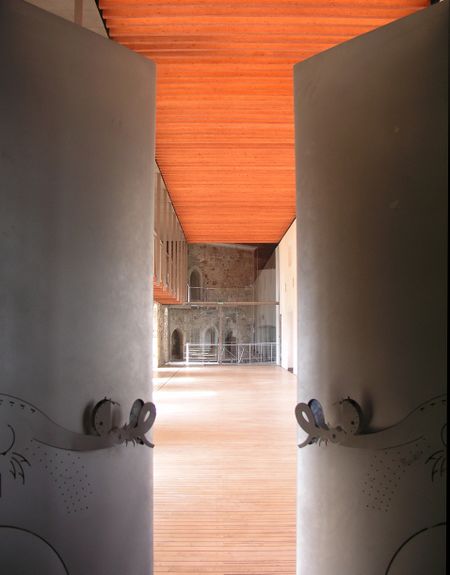

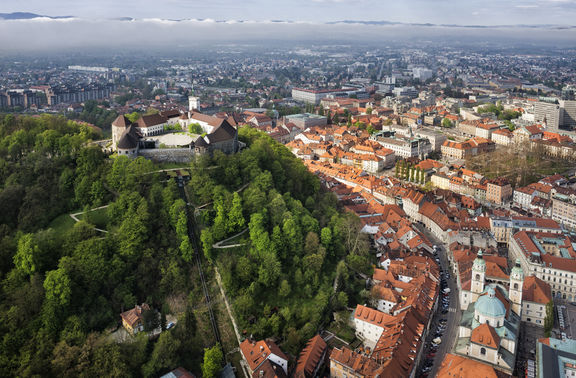

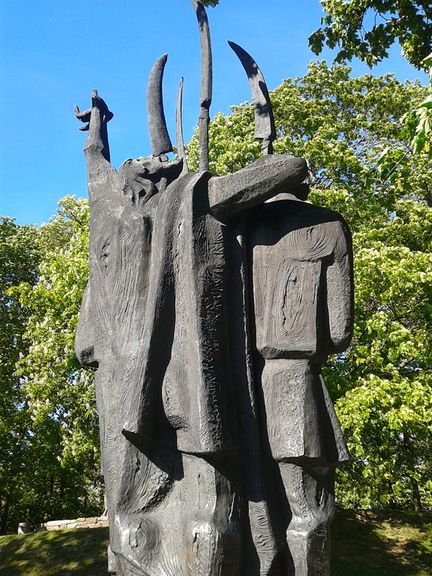

![Ljubljana Castle and Slovene Philharmonic, shot from the recently renewed Congress Square [Kongresni trg], 2012](/images/thumb/2/25/Ljubljana_Castle_2012_distant_view.jpg/576px-Ljubljana_Castle_2012_distant_view.jpg)
